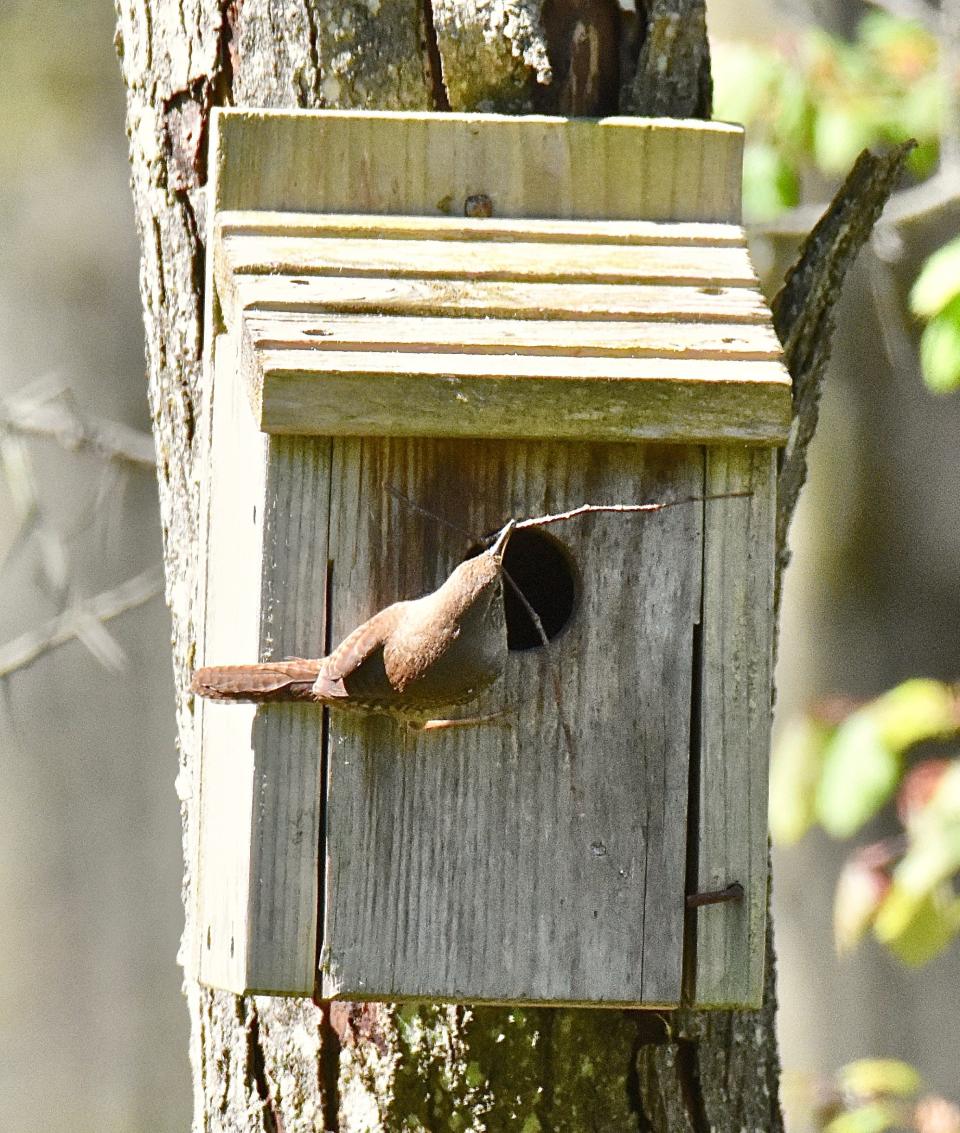It's nesting time in the Southern Tier. These birds are likely to take up residence
I’ve been snooping on cavity nesters of late. Thank goodness a bit of their nesting lives takes place where humans can relish the action.
To wit, a nest box in the yard where a black-capped chickadee pair has taken up residence. It’s a new box this year, purposefully placed 10 yards away from the edge of the woods. I did this to discourage house wrens from finding the box to their liking. Wrens prefer nesting in brushy environs. A pair has been using a box about 100 yards from the new one, abutting a section of woods.
My thoughts in placing the new box where I did focused not only on its location in the open yard, but its distance from the active wren box. The farther away the better, given a wren’s propensity for discouraging competition for food with other nesters by filling every available nearby cavity with sticks. This effectively prohibits their use by any bird, regardless of species.

I put up the new box in early April, knowing chickadees are year-rounders and wrens migrate south for the winter.
Making the box available in early spring would give chickadees a chance to establish themselves before wrens returned in early May.
That is, if the chickadees deemed my new box suitable as a place to raise young.
This remained to be seen until April 14, when a chickadee began clinging to the box and staring into its opening.
More: Turtles may move slowly, but blink and you'll miss this part of their life cycle
Before long I witnessed back-and-forth action, as birds brought in various bits of fluff for nest lining.
All good, I thought. Now we’ll wait for the wrens to arrive. A male did on May 2. I knew because suddenly the yard rang out with a babbling brook kind of sound. House wrens are vociferous singers. Once they get started, it seems they may never desist.
To my chagrin, most of the noise emanated from the woods edge closest to the chickadee box. I could see the wren flitting about as it sang, staying in the woods, but occasionally moving into the branches of a large lawn maple standing just a few feet from the box.
The resident chickadee-in-charge responded by poking its head out the nest hole and keeping it there, effectively blocking wren invasion.
This back-and-forth continued for several days. All the while I feared for the worse. The wren personality might best be described as aggressive. Chickadees are feisty but are they feisty enough to deter wren assault?
I got my answer a few days later, when the wren began singing near the box it used last year. It followed that up by bringing twig after twig to box, some of them five inches long. These would be used as nest material, but first they had to be jammed, crammed, coaxed and maneuvered into the box. I enjoyed with great pleasure the house wren contortions that followed.
So now things are settled. I hope eggs in both boxes are nestled and brooded by parents. Can’t we all be friends in my small neighborhood? It could be the answer is yes.
E-mail Rick at rmarsi@stny.rr.com
This article originally appeared on Binghamton Press & Sun-Bulletin: Southern Tier birds in May nesting mode: What visitors you may see

